Television was introduced to Americans in 1939 and began to gain a foothold after the Second World War. In the 1950s, the sale of TV sets and the boom in programming made TV America’s favorite source of entertainment.
In 1950, just under 20 percent of American homes contained a TV set. Ten years later, nearly 90 percent of homes contained a TV—and some even had color TVs.
The number of TV stations, channels, and programs all grew to meet this surging demand. The 1950s truly were the golden age of television.
To attract buyers, manufacturers and advertising agencies created many interesting ads that tried to convince people to buy a TV set. Some of these cool TV ads are collected in this article.
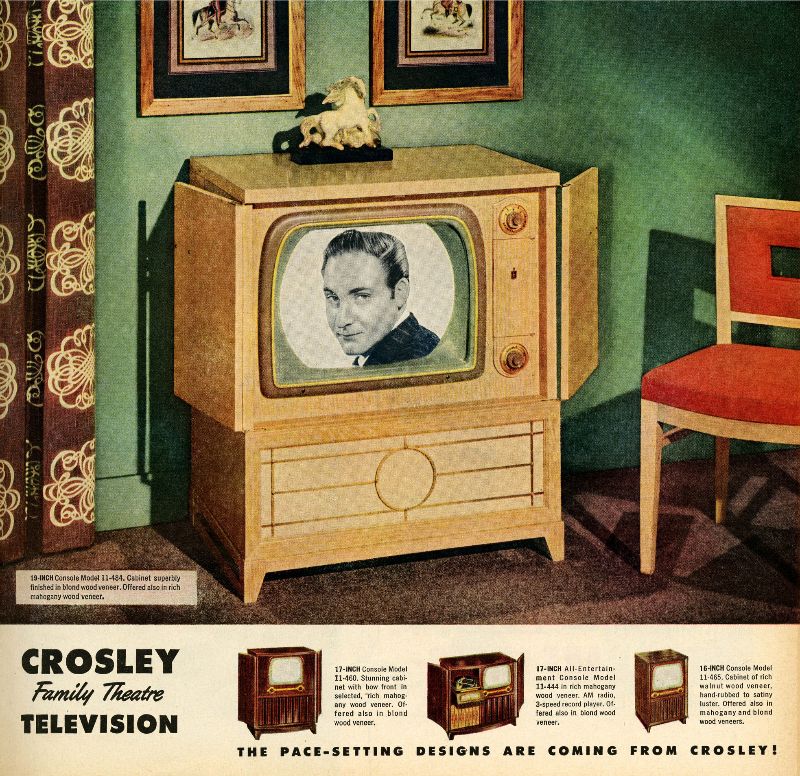
Crosley Family Theatre Television, 1951.
Early electronic television sets were large and bulky, with analog circuits made of vacuum tubes. As an example, the RCA CT-100 color TV set used 36 vacuum tubes.
Following the invention of the first working transistor at Bell Labs, Sony founder Masaru Ibuka predicted in 1952 that the transition to electronic circuits made of transistors would lead to smaller and more portable television sets.
The first fully transistorized, portable solid-state television set was the 8-inch Sony TV8-301, developed in 1959 and released in 1960.
However, the first fully transistorized color TV set, the HMV Colourmaster Model 2700, was released in 1967 by the British Radio Corporation.
This began the transformation of television viewership from a communal viewing experience to a solitary viewing experience. By 1960, Sony had sold over 4 million portable television sets worldwide.

Hallicrafter’s Dynamic Tuner, 1950.
By 1949 Americans who lived within range of the growing number of television stations in the country could watch, for example, The Texaco Star Theater (1948), starring Milton Berle, or the children’s program, Howdy Doody (1947).
They could also choose between two 15-minute newscasts CBS TV News (1948) with Douglas Edwards and NBC’s Camel News Caravan (1948) with John Cameron Swayze (who was required by the tobacco company sponsor to have a burning cigarette always visible when he was on camera).
Many early programs such as Amos ‘n’ Andy (1951) or The Jack Benny Show (1950-65) were borrowed from early television’s older, more established Big Brother: network radio.
Most of the formats of the new programs newscasts, situation comedies, variety shows, and dramas were borrowed from radio, too.
NBC and CBS took the funds needed to establish this new medium from their radio profits. However, television networks soon would be making substantial profits of their own, and network radio would all but disappear, except as a carrier of hourly newscasts.
Ideas on what to do with the element television added to radio, the visuals, sometimes seemed in short supply. On news programs, in particular, the temptation was to fill the screen with “talking heads,” newscasters simply reading the news, as they might have for radio.
For shots of news events, the networks relied initially on the newsreel companies, whose work had been shown previously in movie studios.

IT&T’s New Amsterdam Television, 1950.
By the mid-1950s, television programming was in a transitional state. In the early part of the decade, most television programming was broadcast live from New York City and tended to be based on the theatrical traditions of that city.
Within a few years, however, most of entertainment TV’s signature genres—situation comedies, westerns, soap operas, adventures, quiz shows, and police and medical dramas—had been introduced and were spreading across the network schedules.
Much of this change had to do with the fact that the center of the television production industry was moving to the Los Angeles area, and programming was transforming accordingly: the live theatrical style was giving way to shows recorded on film in the traditions of Hollywood.

Motorola Television, 1950.
NBC television president Sylvester Weaver devised the “spectacular,” a notable example of which was Peter Pan (1955), starring Mary Martin, which attracted 60 million viewers.
Weaver also developed the magazine-format programs Today, which made its debut in 1952 with Dave Garroway as host (until 1961), and The Tonight Show, which began in 1953 hosted by Steve Allen (until 1957).
The third network, ABC, turned its first profit with youth-oriented shows such as Disneyland, which debuted in 1954 (and has since been broadcast under different names), and The Mickey Mouse Club.
The programming that dominated the two major networks in the mid-1950s borrowed heavily from another medium: theater.
NBC and CBS presented such noteworthy, and critically acclaimed, dramatic anthologies as Kraft Television Theater (1947), Studio One (1948), Playhouse 90 (1956), and The U.S. Steel Hour (1953).
Memorable television dramas of the era most of them broadcast live included Paddy Chayefsky’s Marty (1955), starring Rod Steiger (Ernest Borgnine starred in the film), and Reginald Rose’s Twelve Angry Men (1954).

A 1951 17-Inch Sparton Del-Mar, 1951.
Viewers apparently preferred dramas or comedies that, while perhaps less literary, at least had the virtue of sustaining a familiar set of characters week after week.
I Love Lucy, the hugely successful situation comedy starring Lucille Ball and Desi Arnaz, had been recorded on film since it debuted in 1951 (lasting until 1957). It had many imitators.
The Honeymooners, starring Jackie Gleason, was first broadcast, also via film, in 1955 (lasting until 1956 with the original cast).
The first videotape recorder was invented by Ampex in 1956. Another format introduced in the mid-1950s was the big-money quiz show.
The $64,000 Question (1955-58) and Twenty-One (1956-58) quickly shot to the top of the ratings. In 1959, however, the creator of The $64,000 Question, Louis C. Cowan, by that time president of CBS television, was forced to resign from the network amid revelations of widespread fixing of game shows.
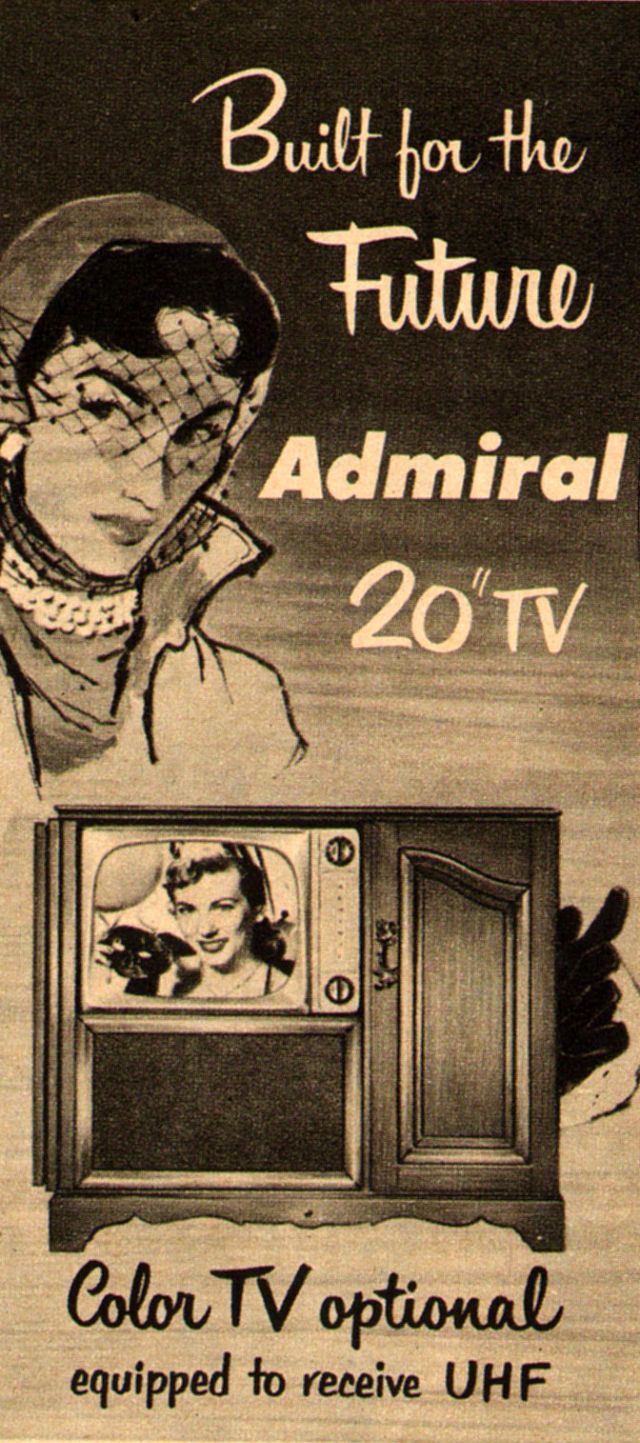
Admiral Television, 1951.
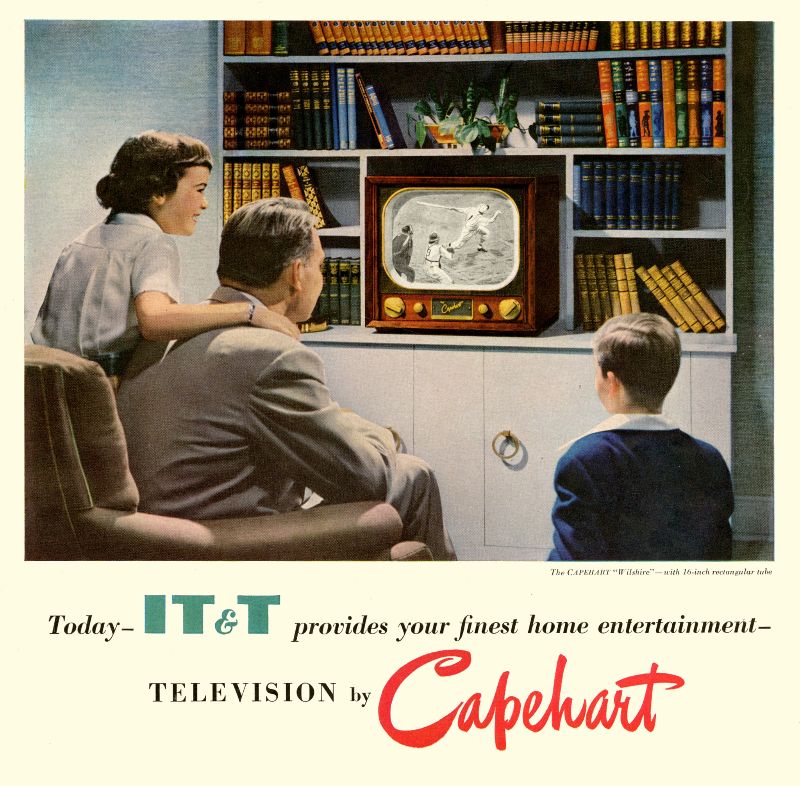
Capehart Television, 1950.

Dramatic New Zenith Television, 1951.

Emerson TV, 1951.

Motorola TV, 1951.

Philips TV, 1951.

Stewart-Warner TV, 1951.

Zenith Black Magic Television, 1951.

A television brings unlimited joy to every household, Motorola TV, 1952.

Motorola TV, 1952.

New 21″ Admiral TV, 1952.
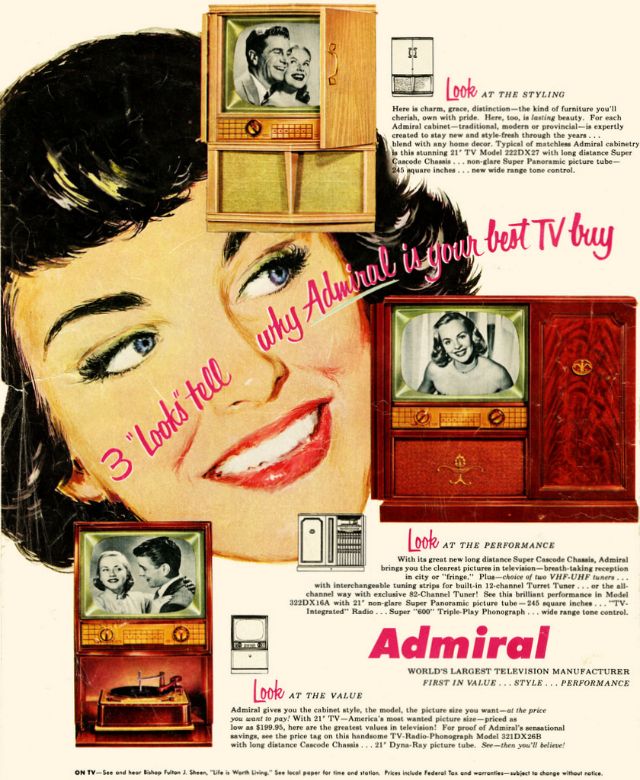
Three “looks” tell why Admiral is your best TV buy, 1953.
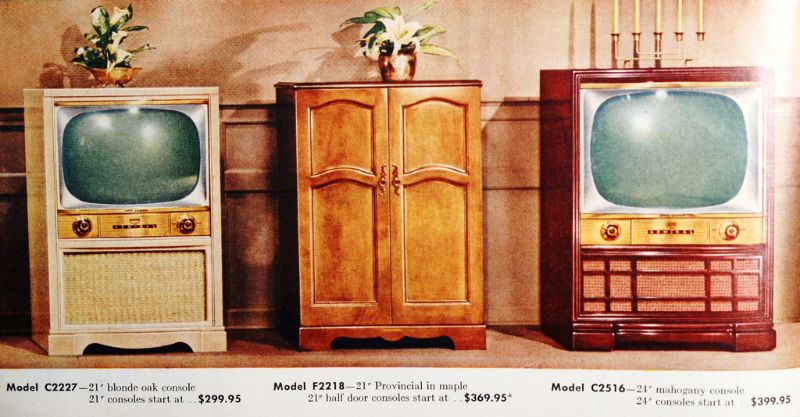
Admiral TV series, 1953.

Admiral TV series, 1953.

Admiral TV, 1953.

Spartan Cosmic Eye Television, 1953.

Stromberg-Carlson Television with Thrilling Panoramic Vision, 1954.

General Electric Television, 1955.

Philips Series “400” P-3550, Line Of Distinction, 1955.

Zenith Television, 1955.

Crosley Television, 1956.
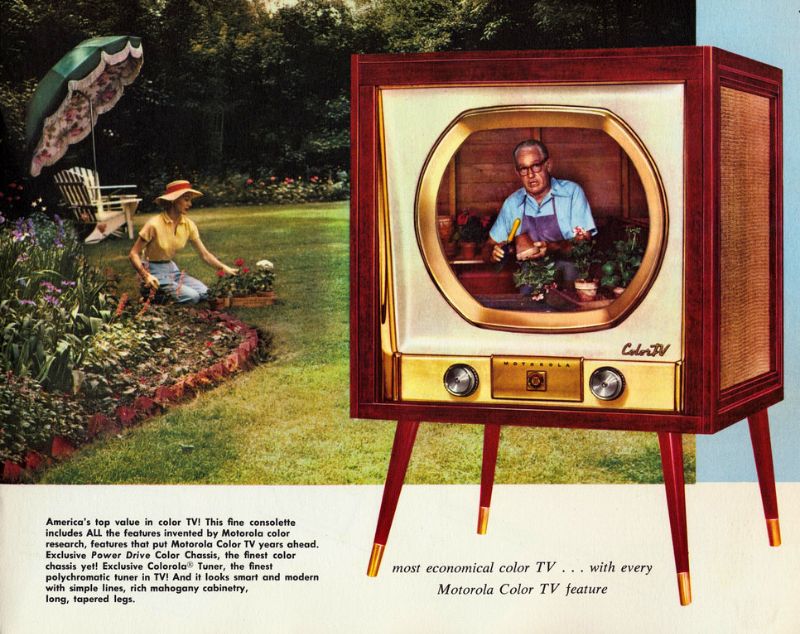
Motorola Color TV Console, 1956.

Motorola Color TV with finest picture, finest sound, 1956.

Motorola Front Tuning, 1956.

The Fine New Motorola TV, 1956.

Miss America Philco TV, 1957.
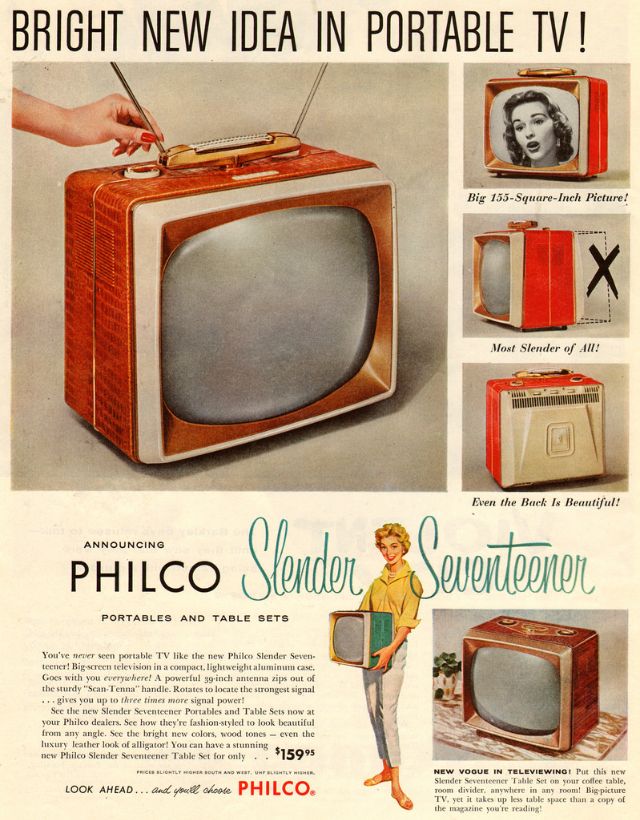
Philco Slender Seventeener television set, 1957.

Motorola TV, 1958.

Sylvania HaloLight Television, 1959.
(Photo credit: Pinterest / Wikimedia Commons / History of Television by Mitchell Stephens / Times / Getty Images).
.jpg)


